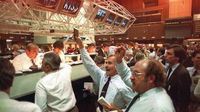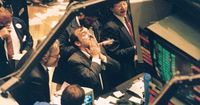The financial markets are currently experiencing significant turmoil, echoing past crises that have shaped the global economy. Recent fears surrounding the United States' massive tariff package have triggered steep declines across stock exchanges worldwide, reminiscent of historical market crashes.
Major stock market crashes have marked the last century, with the most notable events occurring in 1929, 1987, 2000, 2008, and 2020. Each of these events has left lasting impacts on investors and the economy at large.
On October 24, 1929, known as "Black Thursday," panic selling at the New York Stock Exchange resulted in a staggering decline of over 22 percent in the Dow Jones Industrial Average at the start of trading. By the end of the day, losses were somewhat contained, with the index closing down just 2.1 percent. However, the crisis deepened as the Dow fell another 13 percent on October 28 and 12 percent on October 29, marking the beginning of the Great Depression in the United States and the worst global economic crisis of the 20th century.
Fast forward to October 19, 1987, dubbed "Black Monday," when the Dow Jones plummeted by 22.6 percent. This crash was fueled by a combination of a high U.S. trade and budget deficit and rising interest rates, leading to widespread panic across global markets. Analysts noted that this was the first comparable crash in the computer age, resulting in a rapid, chaotic reaction among investors.
The early 2000s brought another significant downturn with the bursting of the dot-com bubble. After reaching a record high in March 2000, the Nasdaq technology index fell by 27 percent in the first two weeks of April and ultimately dropped by 39.3 percent over the entire year. This crash primarily impacted small investors who were heavily invested in tech stocks, many of which failed to deliver on their promises.
In 2008, the U.S. faced a severe financial crisis triggered by a collapse in the real estate market. This crisis stemmed from banks issuing high-risk loans to low-income individuals starting in 2001. As interest rates rose, many homeowners were unable to meet their mortgage obligations, leading to a wave of foreclosures. The fallout from this crisis was felt globally, with major stock indices falling by 30 to 50 percent from January to October of that year. The crisis peaked with the bankruptcy of Lehman Brothers in September 2008, which many consider a pivotal moment in the financial meltdown.
To mitigate the impending recession, governments worldwide implemented significant financial rescue packages. In Germany, for instance, the cabinet convened on October 13, 2008, agreeing to a 470 billion euro bailout, the largest in the nation’s post-war history.
Most recently, the COVID-19 pandemic prompted another round of market crashes. Following the World Health Organization's declaration of a pandemic on March 12, 2020, stock markets around the world reacted violently the next day. The New York Stock Exchange saw a drop of 10 percent, while Frankfurt and Paris fell by 12 percent, Madrid by 14 percent, and Milan by 17 percent. These declines marked the largest losses since the 1987 crash, as investors reacted to the uncertainty surrounding the pandemic and its economic implications.
As the current market fluctuations unfold, analysts are drawing parallels to these historic downturns. The recent losses, attributed to tariffs imposed by former President Donald Trump, have led some to label the situation as "historical" and others as a "bloodbath." The DAX in Frankfurt, for example, experienced a temporary decline of 10 percent amidst the turmoil, reflecting global fears about the economic repercussions of trade policies.
In light of these events, investors are left grappling with the uncertainty that has characterized previous market crashes. The echoes of history remind us that while markets can recover, the path to stability is often fraught with challenges.
Looking ahead, market analysts urge caution, emphasizing the importance of understanding the underlying factors that contribute to such drastic market movements. The lessons learned from past crashes may provide valuable insights into navigating the current financial landscape.
As the world watches the unfolding situation, it remains to be seen how long-lasting the effects of these recent events will be on both the economy and investor confidence. The historical context of stock market crashes serves as a reminder of the volatility that can arise from economic decisions and market psychology.
In conclusion, the financial markets are once again in turmoil, with recent developments evoking memories of past crises. Investors and analysts alike are left pondering the implications of these fluctuations and the potential for recovery in the face of uncertainty.





